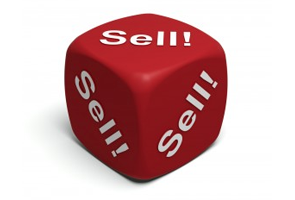“Yep … heard that before.”
It’s the worst thing people reading your sales copy could possibly think. The problem is that we get into a routine in our writing, and after a while, it all starts sounding very repetitive.
Another problem, as I see it, is that we know our products too well. Wait, is that even possible? It’s as if knowing so much gives us tunnel vision regarding the features and benefits. We may think that something is cool, but let’s try to remember that it’s not about us.
In terms of your business, the only opinion that matters is that of the customers, so when they read your copy, it has to focus on the right things. Here are a few suggestions on how to determine what those things are and how to present them in a way that converts.
1. What Problem Are You Trying to Solve?
It doesn’t matter if you’re writing a 50-word product description or a 10,000-word sales letter. Your first and best line of defense when it comes to marketing anything is determining the “pain” that your product soothes. Don’t like that terminology? Try this: What void does your product fill? People need to have a reason to buy from you, so drive the need and present the benefits as solutions, not just fun features.
2. The Old Steak vs. Sizzle Approach
I recently saw a commercial for a sort of ankle support that was supposed to soothe a number of ailments, from arthritis to plantar fasciitis and everything in between. I got curious, so I went on Amazon and discovered that there are dozens of products like this one at all possible price points.
That said, I would have bought from the people on the commercial in a heartbeat, even though their product wasn’t the least expensive. Why? Because they knew how to frame the problem and sell the solution.
Sure, they touted all the benefits of the product, how it had “seven zones of support,” and how well-made the product was, but what got me was the way they constantly steered the emphasis back around to how the product made people feel. There was 30 seconds’ worth of “the product will make you feel better” for every 5 seconds of “the product has these features.”
Features and benefits are not the same thing. Be smart about how you weight one against the other in your copy. Features inform; benefits sell.
3. Why Your Product?
Remember the movie “Office Space”? If you haven’t seen it, I totally recommend it. I like the line in that movie about how people can buy a burger anywhere, but they go to a particular restaurant for the atmosphere and the attitude.
So here’s my question to you: What attitude are you conveying in your copy? What kind of atmosphere are you creating around the benefits of your product? Why is yours the better burger?
Even if, at the end of the day, you have to admit that your product is dead average, framing the benefits with the right attitude and atmosphere can create a huge buzz. It can motivate people to click through past your presell page and place an order long before they even think about going comparison shopping. Remember, it’s not about why they should buy a burger – it’s about why they’ll feel better if they buy yours.
4. Are the Benefits Congruent with Your Brand Message?
The only danger with the whole attitude and atmosphere thing is that it’s easy to overdo it and it’s easy to create a message that is incongruent with your brand message. I like to refer to this as being intelligently enthusiastic.
When communicating the benefits of your product, your message has to fit with how you want your brand to be perceived. That will not only help you make a sale, it will help you build brand loyalty. Is the perception of your product’s benefits realistic and will it deliver the kind of experience that will keep your customers coming back?
5. Ask Yourself: “Would That Description Make Me Want to Buy My Product?”
Bear in mind that no one knows your product as well as you and no one believes in it as much as you. You can elevate the experience of engaging with your brand with your copy, but selling the product is secondary to selling the notion of buying from you. If what you have to say about the product is drab or uninteresting, that is going to be the perception of both the product and your brand.
What is it that excites you about your product? Really sit back and think about it. Now imagine that you’re sitting down for lunch with a perfect stranger and you need to convey that excitement in a way that’s going to rub off on that person instantly. That is precisely what you’re doing when you’re communicating the benefits in your product.
So if I had to define a key takeaway here, it would be this: If you want to successfully communicate the benefits of your product in your copy, put yourself in your customers’ shoes, because it’s their perception that matters. What about your product is going to get them excited? How will buying from you benefit them in ways that buying the same product from anyone else won’t?
If you’re on the fence regarding the effectiveness of the message, run it by a few pros. A good copywriting company can give you an honest assessment of the quality of the message and provide you with a few tweaks that you might not think to make keeping the writing strictly in-house.
